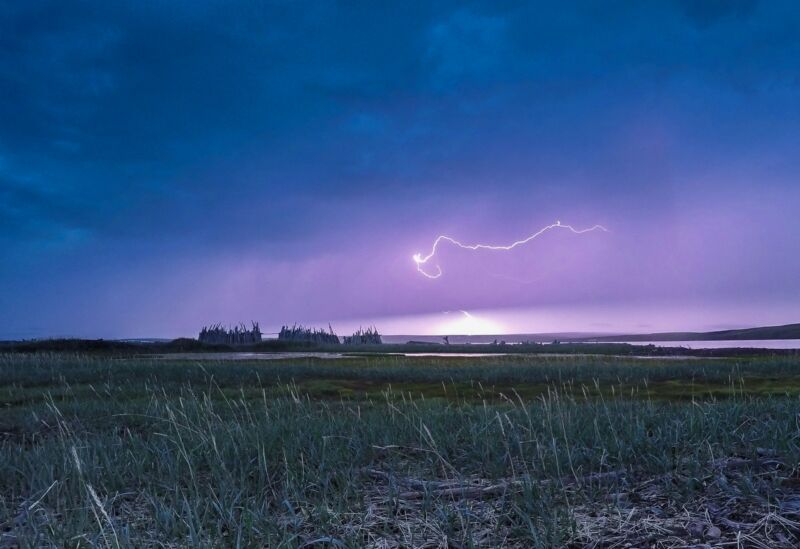
Enlarge / Lightning strikes in the far north of Canada. (credit: Sandra Angers-Blondin)
The Arctic isn’t doing so hot. That’s because it is, in fact, too hot. It’s warming at least twice as fast as the rest of the planet, which is setting off vicious feedback loops that accelerate change. Ice, for instance, is more reflective than soil, so when it melts, the region absorbs more solar energy. More dark vegetation is growing in northern lands, absorbing still more of the sun’s heat. And when permafrost thaws, it releases gobs of greenhouse gases, which further warm the climate.
The Arctic has gone so bizarro that lightning—a warm-weather phenomenon most common in the tropics—is now striking near the North Pole. And according to new modeling, the electrical bombardment of the region will only get worse. By the end of the century, the number of lightning strikes across the Arctic could more than double, which may initiate a shocking cascade of knock-on effects—namely, more wildfires and more warming. “The Arctic is a rapidly changing place, and this is an aspect of the transformation that I’m not sure has gotten a whole lot of attention, but it’s actually really consequential,” says UCLA climate scientist Daniel Swain, who wasn’t involved in the research.





